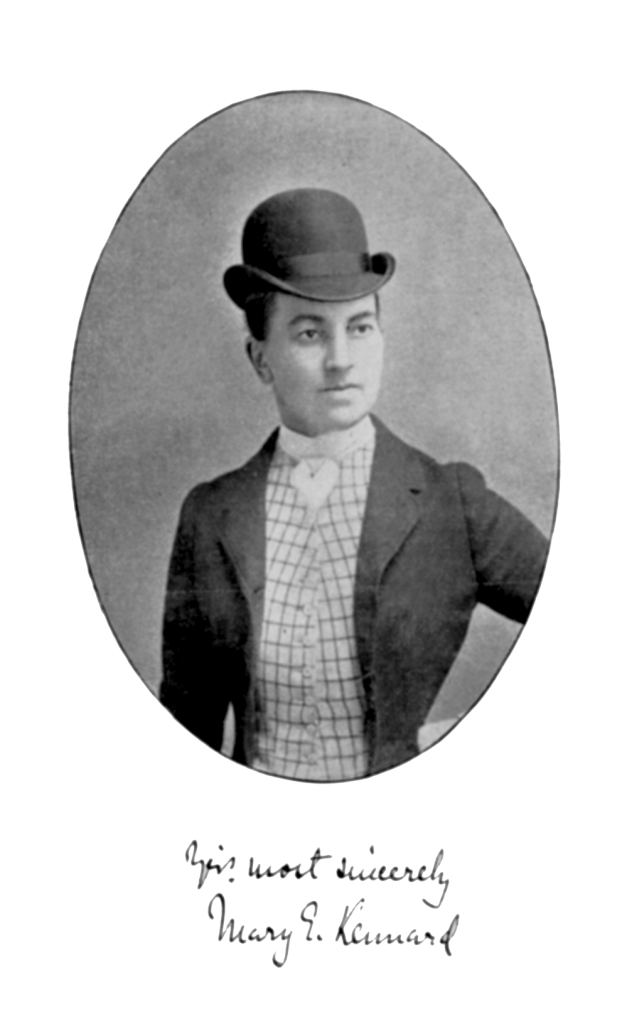Name Mary Kennard Role Novelist | Died 1936 Books The Fate of Fenella | |
 | ||
Mary Eliza Kennard (1850–1936) was an English novelist and writer of non-fiction. Most of her work was published under the name of Mrs Edward Kennard.
Kennard specialised in stories of the English country house world of hunting, shooting, and fishing, and in her heyday was dubbed "the Diana of fiction", in honour of Diana, the Roman goddess of hunting.
Life
Often reported incorrectly as being a daughter of Samuel Laing, Mary Eliza was in fact the daughter of Charles Wilson Faber by his marriage to Mary Beckett, a daughter of Sir Edmund Beckett, 4th Baronet. Her father was a director of the Great Northern Railway and the Metropolitan Railway, and she was brought up at Northaw, Hertfordshire, where she was educated at home by governesses. She had three notable brothers, Edmund Faber, 1st Baron Faber (1850–1920), Denison Faber, 1st Baron Wittenham (1852–1931), and Walter Vavasour Faber (1857–1928), a member of parliament.
In 1870 Mary Eliza married Edward Kennard, himself once a journalist, who became a landed gentleman by buying the Barn Estate on the borders of Leicestershire and Northamptonshire from the 18th Earl of Shrewsbury. This property was centred on a country house called The Barn at Little Bowden, one mile from the town of Market Harborough. Kennard had two sons in the 1870s, Lionel and Malcolm, and her first stories were written for them and were published in a volume called Twilight Tales. She took up writing in earnest to occupy her mind after her sons went away to school.
Kennard's novels, beginning with The Right Sort (1883), are mostly set in her own rural world of hunting, shooting, and fishing. Landing a Prize (1891) was about salmon-fishing, and was the fruit of several summers spent salmon-fishing in Norway. With Bram Stoker, Arthur Conan Doyle, and others, she was one of the authors of the collaborative novel The Fate of Fenella (1892).
Kennard and her husband were both keen motorists and each owned an automobile. Her husband bought a Napier eight horsepower two-cylinder, which he allowed to be entered for a 1,000-mile race with himself as passenger. Kennard wrote kindly of her husband's choice of the Napier, but she preferred herself to drive a De Dion voiturette. Her driving was not without incident, and she turned her car over on the tramlines in Nottingham. In 1903, she published a novel called The Motor Maniac, based around the subject of automobiles. The Spectator gave it a poor review, suggesting that people who did not own an automobile would find the details of "belts, speeds, makes of car, &c... exasperating". However, The Times later called Kennard "a very widely read and prolific author of the mid-eighties" who wrote "rattling good tales".
Widowed in 1910, in 1912 Kennard was living at Leamington. By the time of her death in 1936 she was forgotten as a writer. In its obituary, The Times said of her, "Large sums were earned by her publications; then came complete oblivion, which was viewed by the formerly popular favourite with serene detachment." The same obituary recorded that although she was both blind and crippled by the end of her life, she suffered these problems with "unfailing stoicism". In her old age she took an interest in BBC radio and in the lives of her grandchildren.
